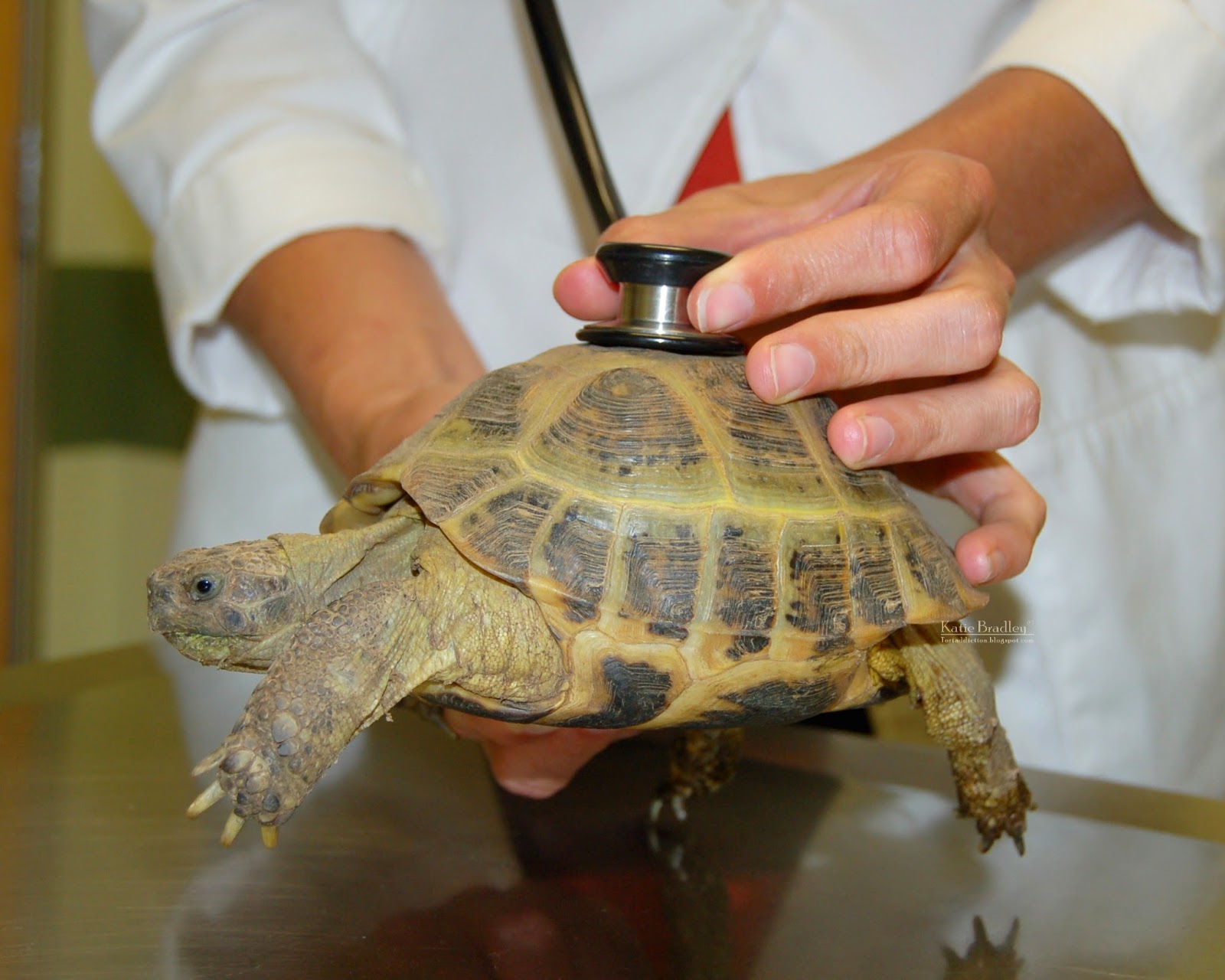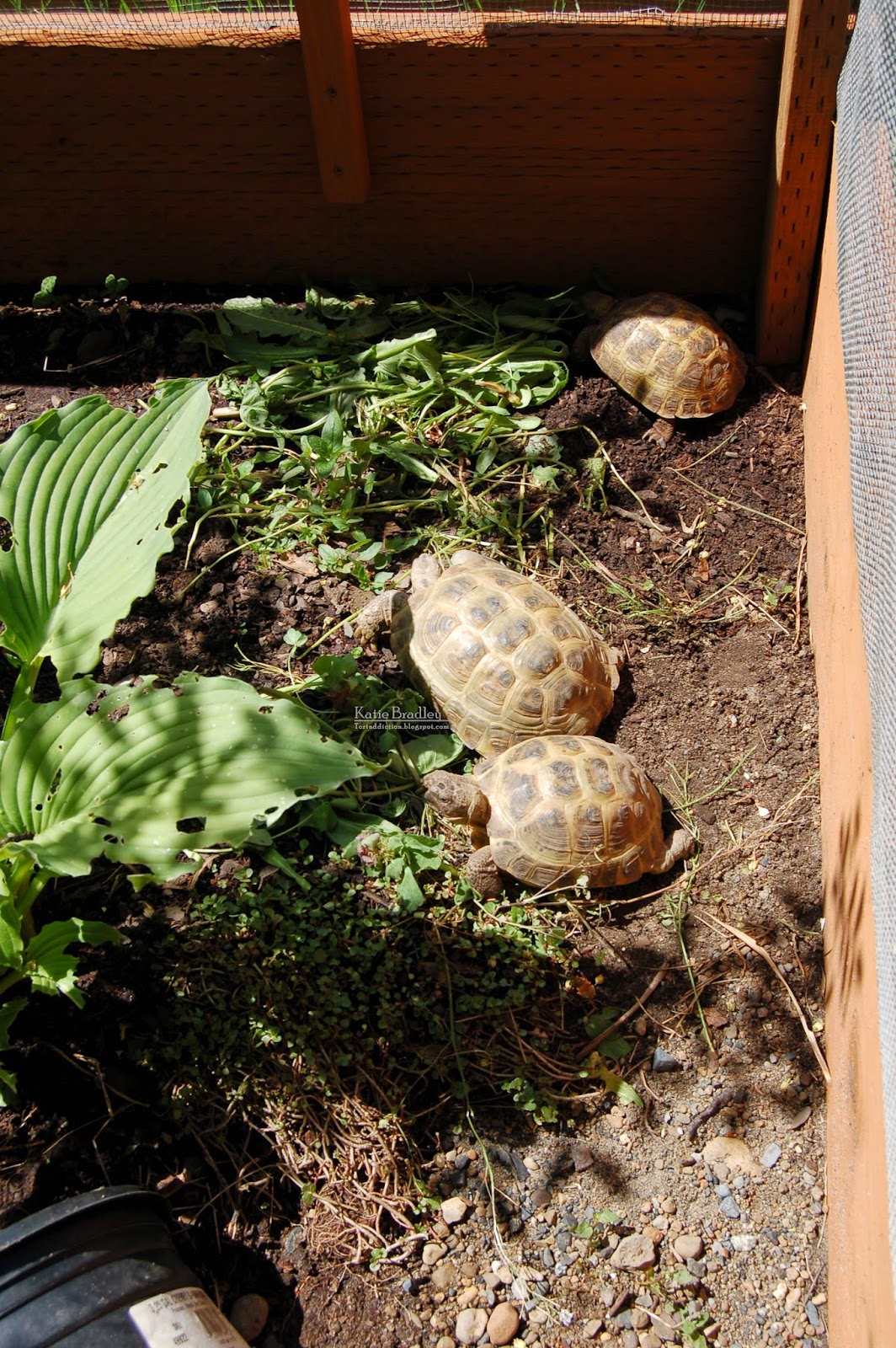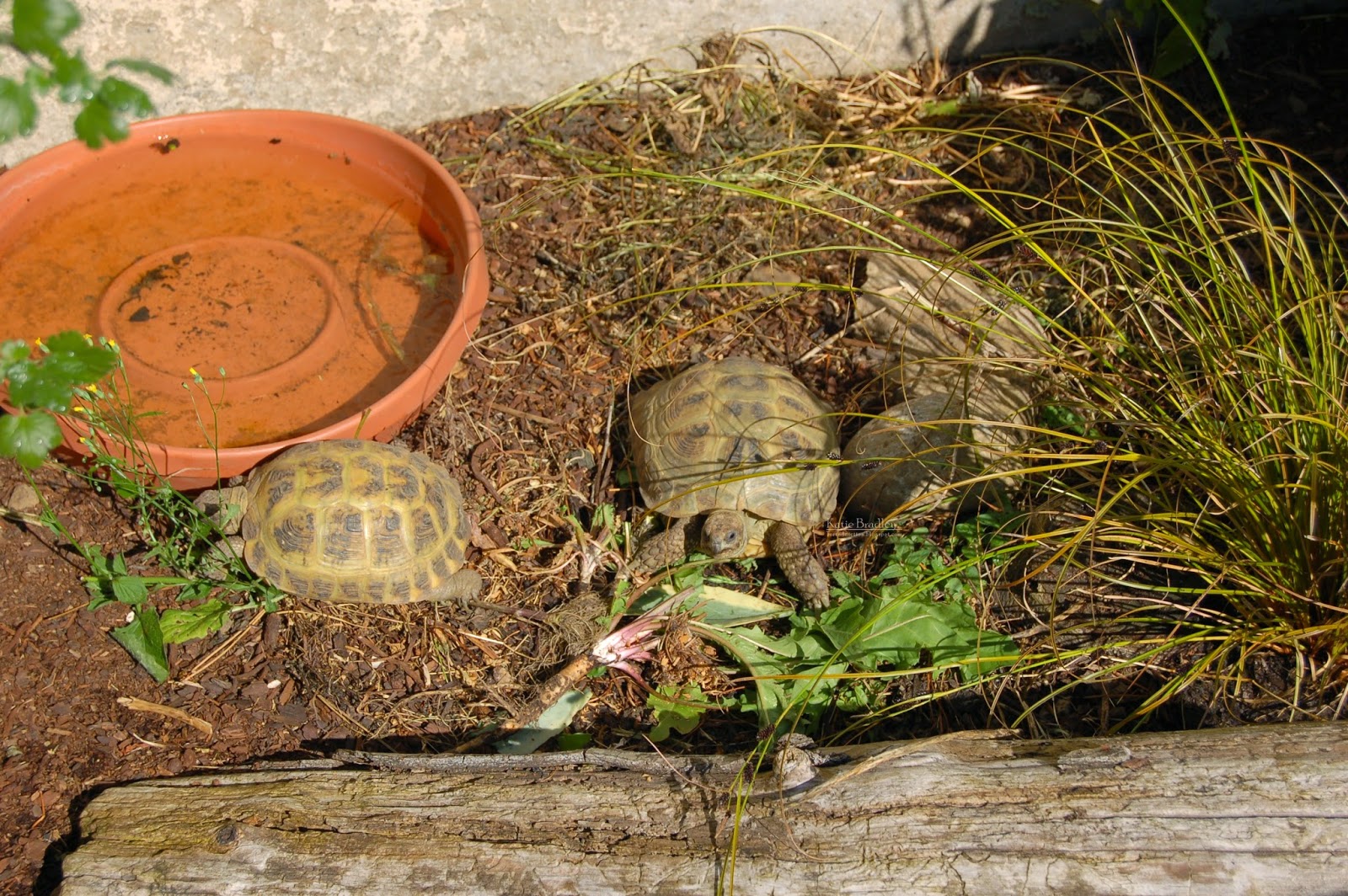 |
| Mila, getting a check-up from Dr. Kelly Flaminio |
 |
| We love our reptile vet, Dr. Kelly Flaminio! |
First, how should you go about finding an exotics vet?
A good starting place is a list of vets that has been compiled by tortoise keepers on the tortoise forum HERE. This list is sorted by State, as well as by country. If you live close to a State border, you may want to check for clinics on the other side of the State line.
(Please keep in mind that not all of the vets on this list are guaranteed to be awesome.... they are however at the very least more likely to know how to provide healthcare for a tortoise!)
 |
| The TFO list of reptile vets in the USA and in the rest of the world. |
 |
| Google map search for "exotics vet" or "exotics veterinarian" |
- Does this vet clinic have experience with tortoises, specifically? (you can even ask if they have experience with your specific tortoise species, e.g. Russian tortoises)
- Is this exotics vet familiar with the different care and dietary requirements of a tortoise in comparison to a turtle?
- How long has this vet been practicing? (sometimes a newer vet will actually have more up-to-date knowledge about tortoises!)
- How long has this vet been providing healthcare for tortoises?
- How many tortoises does this clinic treat each month?
- How often does the veterinarian treat reptiles in comparison to dogs and cats?
- How often does the exotics vet attend continued education events and conferences pertaining to reptiles and tortoise care?
- Is this vet able to trim your tortoises beak, if necessary?
- Does this vet perform surgery on tortoises, should this ever become necessary?
- Is this vet available in the case of after-hour emergencies? (Not all are - in that case, please also ask for the contact information of an emergency vet who will see a tortoise. It is good to have this information on hand, should it ever become necessary.)
- Is this vet able to keep a tortoise overnight should treatment require an extended stay?
A few questions should be asked that pertain to the financial aspect of a vet visit:
- Is the first exam free? (can't hurt to ask - often it is!)
- How much is the exam fee? (within a town, this can vary greatly from one office to another!)
- Does this clinic do fecal exams for parasites in-house or externally?
- Are they willing to run a fecal exam without requiring an office visit? Then if parasites are found, and treatment is necessary, you can still bring your tortoise in for the office visit and to get treatment.
- Does the veterinarian give a price quote before performing a surgery or another procedure? Will different options be given? Does this vet clinic offer payment options if a high vet fee is incurred?
Armed with the above questions, you should be able to determine whether a vet will be able to help you and your tortoise.
 |
| Although currently in perfect health, this tiny baby tortoise will likely need vet care at some point in her life. |
We are lucky to have a wonderful and experienced reptile vet within easy driving distance of our home. Our veterinarian, Dr. Kelly Flaminio at the East Mill Plain VCA, is very knowledgeable, and we have had a very good experience with her care for several of the reptiles we own or foster.
Because our reptiles have gotten such great care, I thought it might be useful to you to see a few of Dr. Kelly's answers to some of my questions:
Q: "How many reptiles does your veterinary clinic see on average?"A: "Between 50-100 per month. Usually about 3 per day."
Q: "How long have you been treating tortoises?"
A: "I have been treating tortoises and other reptiles for about 5 years."
Q: "How often do you attend conferences and continued education events?"
A: "Twice a year."
Q: "What are the most frequent reptile cases you see?"
A: "We most frequently see new lizards parents bought for kids. Next, the most frequent cases are amputations and abscesses of various reptiles. Many reptile keepers don't bring their animal in until something bad happens, unfortunately."
Q: "What do you most frequently see tortoise patients for?"
A: "New tortoise pets often come in to be checked and treated for parasites and to have blood work done to ensure they are healthy. Long-term, tortoises most frequently come in for a beak trim. Some tortoises we see suffer from MDB (metabolic bone disease) from improper husbandry. In the Spring we usually see quite a few tortoises with URIs (upper respiratory infections) or pneumonia. Sometimes tortoises that have been found on the loose are relinquished to the clinic, and then we find foster homes for them."
Many of the above questions had already been answered in previous interactions: Dr. Kelly has extensive experience with tortoises, and definitely knows the difference between a box turtle and a tortoise. She is able to perform surgery on tortoises and other reptiles in-house. The clinic is able to keep reptiles overnight if necessary.
During my interview with her, Dr. Kelly also mentioned that local new patients to her clinic are welcome to print off the 'free first exam' coupon from their website. They will honor the coupon for reptiles as well as for dogs and cats.
 |
| Whether you have a very large tortoise, or a very small tortoise, ...it's a good idea to know a good reptile vet! |
There are a few RED FLAGS that indicate that a reptile vet is NOT a good tortoise vet:
- You are told to feed your tortoise 'more animal protein.' (this is based on a confusion over tortoises vs. box turtles)
- You are told to add cat food into your tortoise's diet (this is based on 35-year-old, outdated information that results in terribly deformed tortoises)
- The vet suggests treatment for parasites with medication other than Safeguard or Panacur (active ingredient fenbendazole). (other worm medications, such as ivermectin, can kill a tortoise!)
- You are told not to provide water in the enclosure (this is based on outdated, false information)
- You are told to use sand for substrate
- The vet claims to be able to tell you how old your tortoise is based on the 'rings' in his shell (tortoises are not trees. The rings are based on seasons of plentiful food and lack of food... which can happen several times throughout a year. The only way to know a tortoise's age is to know it's hatch date or at least hatch year).
 |
| Mila frowns on the idea of having her rings counted to tell her age. |
CAUTION:
If you live out in the country, it may be necessary to drive several hours to get to a good reptile vet. If the weather is very hot or very cold, be sure to accommodate your tortoise accordingly. A bin with some paper towels or cloth towels works well for a transport container. Never leave your tortoise in the car - you don't want it to die of freezing or heat stroke.
If it is necessary to cross State lines to get to a good reptile vet, please be sure to know the laws pertaining to bringing reptiles across. The last thing you want is for your tortoise to be confiscated, or for you to have to pay a fine.



























